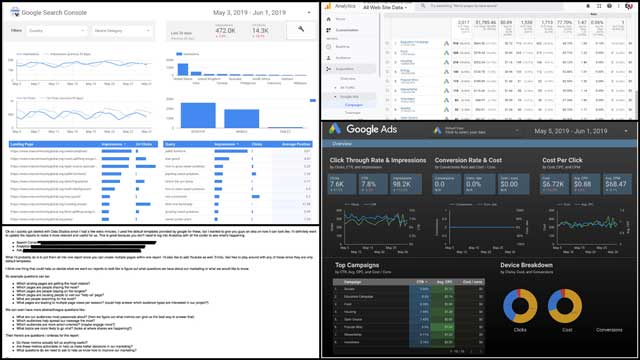Top tips and strategies for creating a successful content strategy on LinkedIn.
LinkedIn offers a unique platform for B2B marketing, with its professional user base and potential for high engagement. Understanding how to effectively use LinkedIn can significantly enhance your content marketing strategy, making it an essential tool for reaching decision-makers and establishing thought leadership.

LinkedIn Content Marketing Fundamentals
LinkedIn has a vast user base that serves as a critical touchpoint for B2B marketing. With over 930 million members globally, it provides several unique advantages, including high engagement rates from a professional audience and the potential to build strong, trust-based relationships.
Key aspects of LinkedIn content strategy include:
- Consistency: Maintain a regular posting schedule to keep the audience engaged.
- Content quality: Provide authoritative, relevant, and valuable content such as industry news, detailed guides, or thought-provoking articles.
- Audience interaction: Respond to comments, participate in discussions, and engage with others’ posts to enhance visibility and build relationships.
- Content variety: Use a mix of text updates, long-form articles, and multimedia content to cater to different user preferences.
- LinkedIn tools: Leverage LinkedIn Groups and Sponsored Content to network and boost visibility.
- Analytics: Regularly review LinkedIn’s detailed analytics to understand what works and fine-tune your approach.
Metrics play a vital role in gauging performance. Key Performance Indicators (KPIs) such as engagement rates, click-through rates, follower growth, and conversion rates provide clear insights into the effectiveness of your strategy.
Audience Targeting and Research on LinkedIn
Effective audience targeting and research on LinkedIn content strategy involve:
- Defining your ideal customer profile (ICP): Identify key demographics such as industry, job title, company size, and location.
- Utilizing LinkedIn analytics: Gain insights into your followers and page visitors, including their industries, job functions, seniority levels, and geographic locations.
- Analyzing behavioral data: Understand how users interact with your content to inform future posts.
- Leveraging LinkedIn Groups: Engage with niche communities to gain insights into relevant discussions and topics.
- Using Sponsored Content: Target ads based on specific parameters like job title, company name, industry, and skills.
- Continuous monitoring: Regularly review metrics and adjust your strategy based on audience changes and preferences.
- Combining quantitative and qualitative data: Supplement analytics with insights from direct interactions to understand nuanced audience needs.
By customizing content to resonate with LinkedIn’s professional user base, you can maximize engagement and achieve your content marketing goals more effectively.
Creating and Curating Engaging LinkedIn Content
To create engaging LinkedIn content, utilize various formats strategically:
- Text Posts: Share quick insights or industry news, incorporating questions or calls to action.
- Articles: Showcase expertise through comprehensive analysis, guides, or case studies.
- Photo Posts: Use high-quality images related to your brand or industry, with engaging captions.
- Link Posts: Share valuable resources with context explaining their relevance.
- Native Videos: Create concise, relevant videos optimized for silent autoplay.
- Curated Content: Share content from other authorities, adding your unique perspective.
Engagement best practices:
- Use relevant hashtags (up to three per post) to increase visibility.
- Establish a consistent posting schedule.
- Encourage interaction by asking questions and responding to comments.
- Regularly review analytics to understand content performance and adjust strategy accordingly.
By utilizing these content formats and following best practices, you can create a dynamic LinkedIn presence that drives engagement and establishes your brand as an industry leader.
Measuring and Optimizing LinkedIn Content Performance
To measure and optimize LinkedIn content performance, utilize both LinkedIn’s native analytics and third-party tools like Metricool.
Key performance metrics include:
- Engagement Rate
- Click-Through Rate (CTR)
- Follower Growth
- Impressions and Reach
LinkedIn analytics also provide demographic data about your audience, which is valuable for content customization.
Metricool offers additional features:
- Comprehensive reports across multiple platforms
- Benchmarking against competitors
- Content scheduling and analysis
- Deeper audience insights
Steps to refine your content strategy:
- Identify high-performing content and analyze its characteristics.
- Adjust posting times based on when your audience is most active.
- Experiment with different content types.
- Engage with your audience to build community and increase visibility.
- Regularly review analytics and iterate on your strategy.
By adopting a data-driven approach and consistently refining your content based on performance insights, you can optimize your LinkedIn content marketing for maximum engagement and effectiveness.
Effective LinkedIn content marketing requires a strategic approach that combines consistent posting, engaging interactions, and data-driven optimization. By focusing on these elements, brands can achieve their B2B marketing objectives and cultivate meaningful relationships within the professional community.



